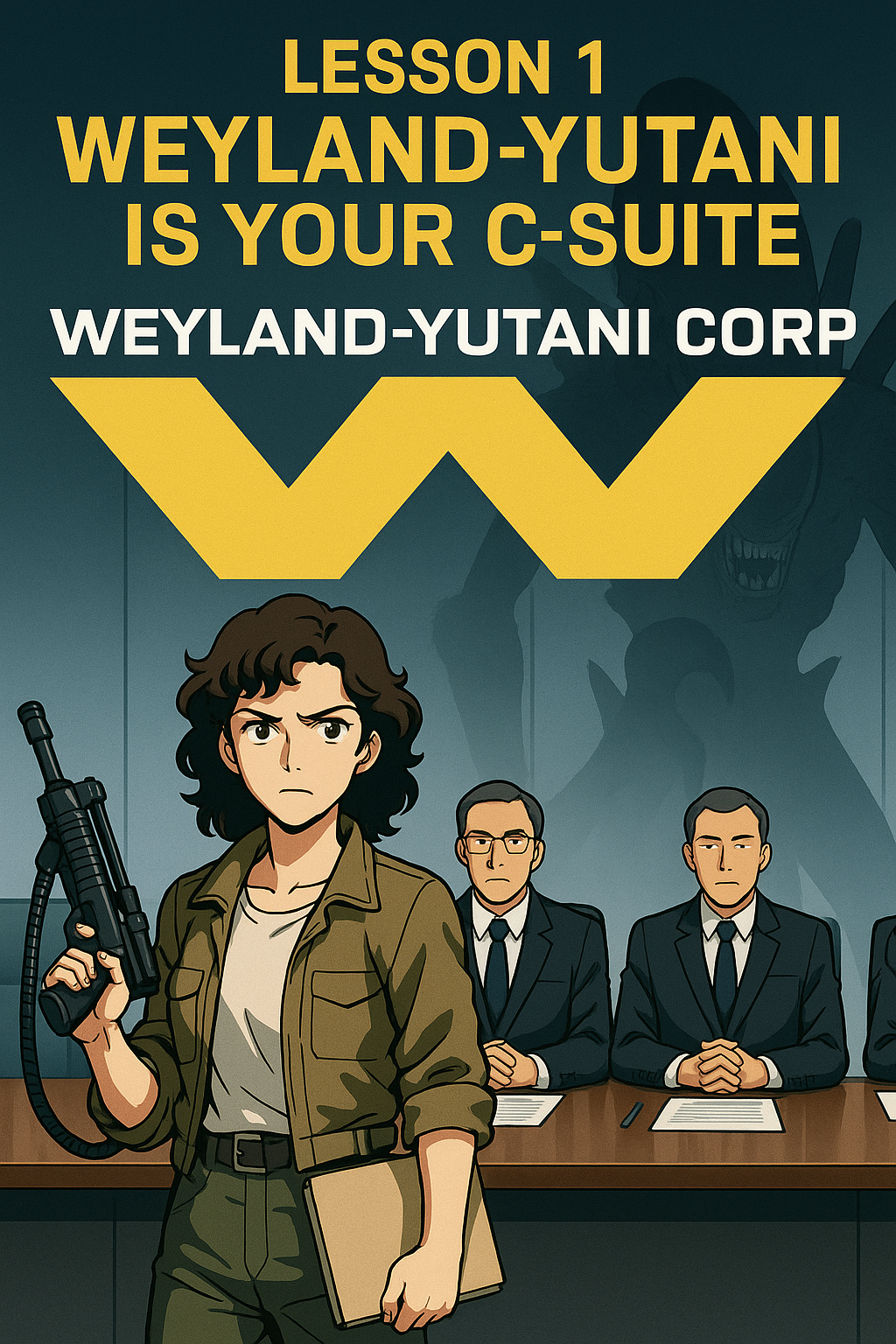Lesson 1: Weyland-Yutani Is Your C-Suite

I didn’t want this job.
Nobody does. Nobody grows up dreaming of leading retrospectives or balancing headcount spreadsheets. I wanted to build. I wanted to write code that sang, patch networks that hummed, push systems until they sparked. But somewhere along the way, they dragged me into the boardroom. They put “Manager” next to my name, like a scarlet letter, and handed me a new toolkit: slide decks, budgets, HR scripts.
That’s when I met them.
The C-suite.
On the surface, they’re immaculate. Crisp suits, steady voices, PowerPoint decks so polished they squeak. They speak in acronyms and “growth strategies.” They can make synergy sound like scripture. They look like the future of your career. They act like they know what’s best.
But peel back the surface and you see it: the Weyland-Yutani logo burned into their foreheads. The smile of someone who’s already signed the order to send you and your team into hostile space with bad intel, broken gear, and a suicide mission disguised as “innovation.”
The Company Always Wins
Here’s the dirty truth: your executives aren’t building anything. They aren’t protecting anyone. They aren’t even playing the same game. They’re cultivating shareholders and polishing their exit packages while you shepherd human beings through the meat grinder.
You think they care about uptime, or bug counts, or the lives of the people under your command? They don’t. They care about delivery. The specimen. The feature. The Q4 projection that keeps the stock price from dipping for a quarter longer.
Your job is to keep your people alive long enough to make that delivery. That’s it.
The Boardroom Is the Hive
Sit in one of those meetings long enough and you’ll see the pattern. The boardroom is just another nest. The air smells like antiseptic and betrayal. Executives drone on about “customer obsession” while they sharpen their knives.
You’ll hear about “strategic pivots” that come out of nowhere, “cost savings” that sound suspiciously like layoffs, and “opportunities for innovation” that are just booby traps set for you and your team. Every “big bet” they make is another egg hatching on the floor of your sprint board.
And when it all goes to hell, they’ll look you dead in the eye and say: “Well, we expected some casualties.”
Translation Layer: You
Middle management — that’s what they call you. What it really means: you are the translation layer between corporate hallucination and engineering reality.
They tell you to ship in six weeks. You know it’ll take twelve.
They tell you to cut scope. You know the scope is the only thing keeping the system from collapsing.
They tell you to “lean into innovation.” You know it’s just another way of saying do more with less until someone burns out.
You can’t repeat their words to your team without sounding like a traitor. You can’t tell your team the truth without sounding like a heretic. So you stand in the middle, jaw clenched, dossier in one hand, flamethrower in the other, praying you can find a third option before everything explodes.
The Real Lesson
Don’t be fooled.
You don’t work for the Company.
You don’t work for the C-suite.
You work for the engineers who still think they can build something that matters. The ones who stayed up all night untangling memory leaks, who wrote docs no one will ever read, who silently carry the weight of a system duct-taped together across a decade of bad decisions.
When the C-suite betrays you, and they will, those are the people who’ll look to you. Not for miracles. Not for corporate spin. Just for the faint hope that someone, anyone, still gives a damn whether they make it out alive.
That’s Lesson One.
The Company is not your ally. The Company will feed you to the monster and then ask for a QBR deck about what went wrong.
So if you’re going to survive in management, remember this: your team is your crew, not your cargo. Protect them, even if it means defying the boardroom, especially if it means defying the boardroom.
Because when the glass breaks and the alarms sound, the suits will already be gone.
And that’s when you’ll finally hear it:
sssshhhhhhhhh—hhhhhkkkkkkk
The hiss. The promise of acid on steel.
The slow, wet click-click of jaws unlocking within jaws.
The dark filling the room as the shadow leans over you.
Until the last thing you know of leadership is the inner mouth lancing forward with a sickening SKRRAKTCH! — neat, precise, corporate-approved termination.
